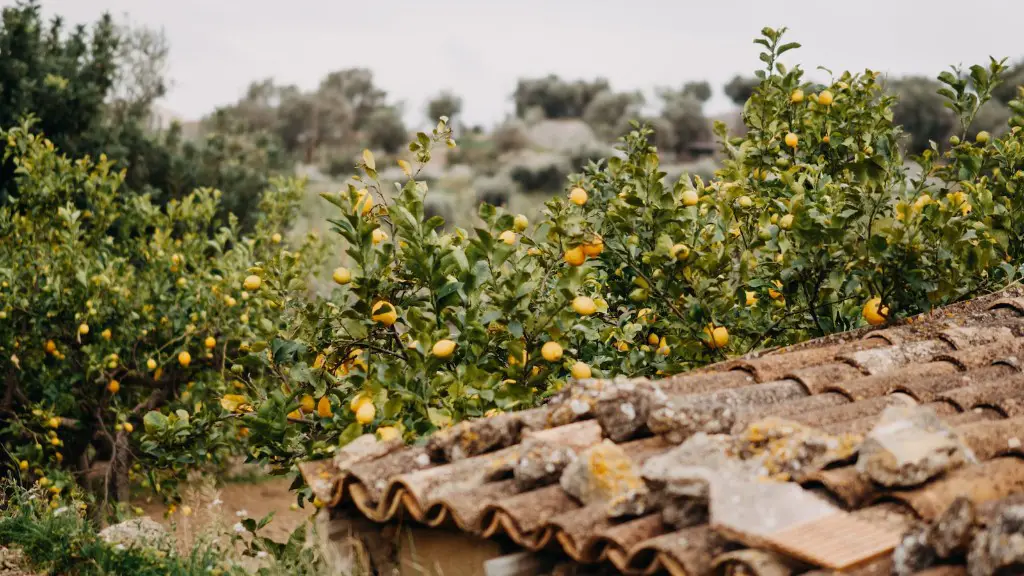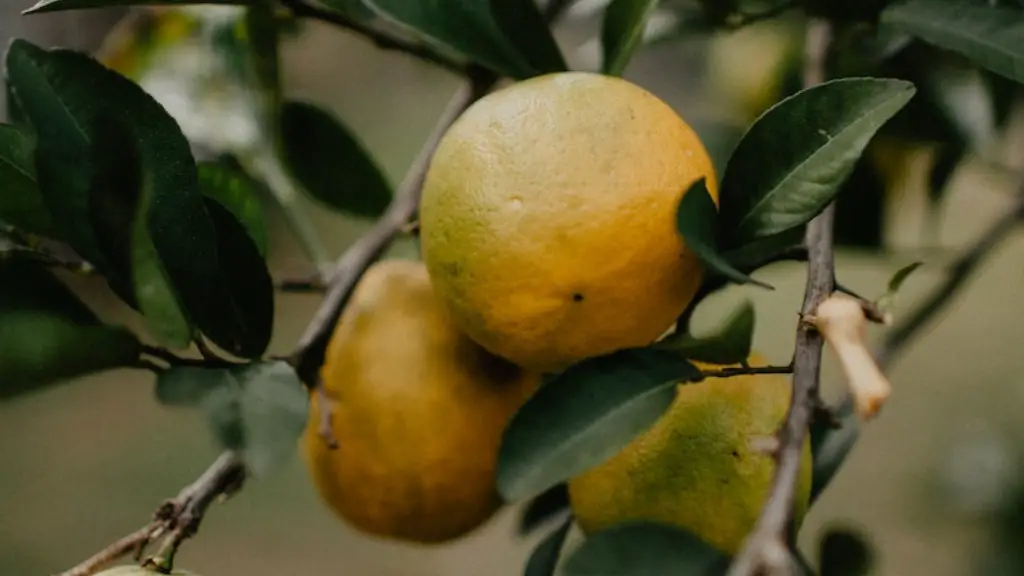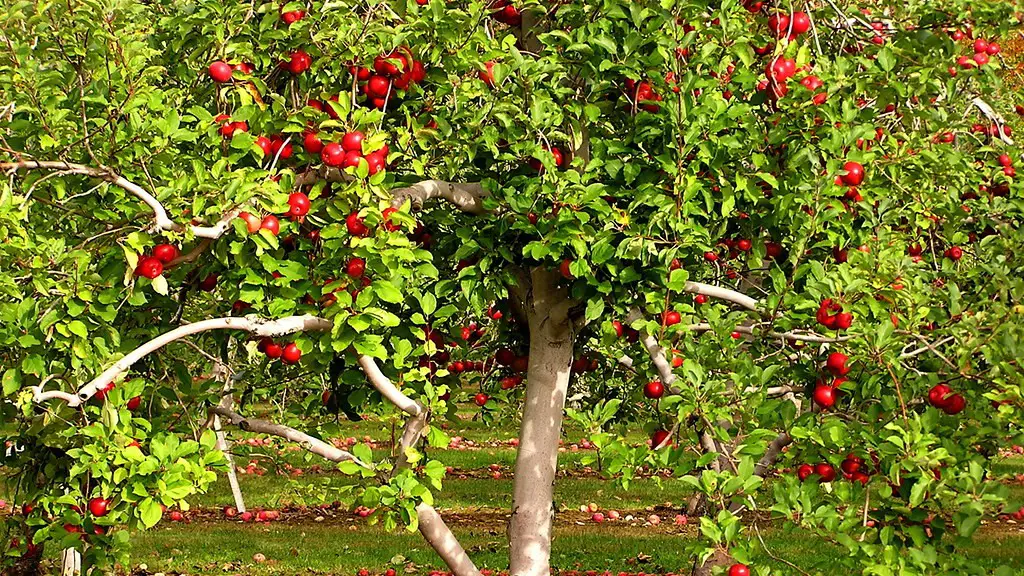How to Know When to Repot a Lemon Tree
To ensure a healthy and thriving tree, periodic re-potting of your lemon tree is essential. Repotting is an easy and straightforward process, but one which requires careful attention. Knowing when to re-pot a lemon tree is key to keep it healthy and productive.
The most important factor when deciding to re-pot a lemon tree is assessing root health. The appearance of new root growth at the bottom of the pot as well as tightened root ball is a clear sign your lemon tree needs re-potting. If roots have started to come out of the drainage holes, re-potting is necessary. The pot size of your lemon tree may also be indicative; if a tree is too small for its root growth, re-pot to a larger size.
A lemon tree in a container needs to be moved to a larger one if growth is becoming constricted. Repotting should be done in spring or early summer, before the tree’s period of active growth. When re-potting, don’t just transplant it into a larger pot. All of the soil should be removed from the root ball, and any old or dead wood removed from the roots.
It’s also important to assess soil health when deciding whether to re-pot a lemon tree. Watch for soil that is hard and cracked. If your soil has not been changed in a few years, it likely needs to be replenished with fresh potting soil for the best nutritional value for your tree. The composition of potting soil can deteriorate over time, so make sure to replenish it.
Check your tree’s watering habits as well. If you’re having to water your tree more frequently than two weeks, it may be an indication that it’s time to re-pot. Root rot, caused by too much soil moisture, is a common affliction of plants and can lead to the death of your lemon tree. If your lemon tree is dropping leaves more so than normal, it may be worth examining the root system further.
Finally, observe the overall health of your lemon tree to determine if it needs to be re-potted. If the leaves are turning yellow or the plant is not producing new growth and leaves, it could benefit from a fresh, new potting soil and a bigger pot. With the right care and attention, you can help a lemon tree thrive and bear delicious fruit for many years.
Healthy Roots are Key to Knowing When to Repot
When considering whether to re-pot a lemon tree, healthy roots are the primary indicator. The roots of the plant should be examined periodically for any signs of growth or tightness. Generally speaking, if there is any new root growth at the bottom of the pot, it should be re-potted into a larger size. Roots that are growing outside of the drainage holes are a warning sign that your tree needs to be re-potted with more space. Re-potting your lemon tree with more appropriate pot size and soil will provide more breathing space for the roots, allowing them to grow more vigorously.
Another key indicator that the lemon tree ought to be re-potted is the condition of the soil; if the soil is hard and cracked, it may be a sign of poor drainage or too much drainage. Replenishing the potting soil or replacing it with fresh soil can provide a lemon tree with the essential nutrients it needs for sustained growth. Heavy soil that is too wet can cause root rot and lead to nutrient deficiencies, so make sure to reassess the soil accordingly.
Observing your tree’s watering habits is also an important factor to consider; if you find yourself having to water your lemon tree more often than two weeks, it is likely time for a re-pot. Too little water can lead to nutrient deficiency or drought stress, while too much water can cause root rot, consequently leading to the death of your lemon tree. Keeping a consistent watering schedule and keeping an eye out for signs of root health can protect your lemon tree from any harm.
Finally, observe the overall health of your lemon tree to identify any signs of unhealthy growth. Leaves turning yellow, or the tree not producing any new growth or leaves could be symptomatic of a root dysfunctions or nutrient deficiencies. Re-potting your tree with a fresh potting soil and a larger pot can often be the solution, and in some cases may even revive a lemon tree that is exhibiting signs of unhealthy growth.
Re-potting a Lemon Tree at the Right Time
Timing is everything when it comes to re-potting a lemon tree; while not an exact science, it is generally wise to re-pot a lemon tree during its dormant period: in the spring before active growth. As with all pruning, it is better to err on the side of caution and re-pot during the early stages of recovery. Re-potting a lemon tree too early can be damaging to the roots and can stunt the tree’s growth. Similarly, re-potting a lemon tree too late can be just as harmful. If it appears that your tree has come to the end of its growth cycle, it is likely too late to re-pot.
When re-potting, make sure to remove any old or dead wood from the roots. Discarding these parts of the tree is essential for proper growth and regeneration. Once the existing soil has been removed from the root ball, it is time to choose the new pot size and potting soil. Generally speaking, aim for a pot size twice the size of the plant’s current pot. If a lemon tree is too small for its root growth, re-pot to a larger size.
It is also important to consider the appropriate potting soil when re-potting. A quality potting soil should be loose to provide adequate drainage; it should also contain beneficial nutrients and fertilizers to help promote healthy root growth. Consider using a soil amendment such as peat moss, coco coir, or perlite to provide more space for the roots. Additionally, using a soil drench such as fish emulsion or liquid kelp prior to planting can provide beneficial nutrients and help maintains an ideal pH balance.
Re-potting a lemon tree is essential to maintain its vigor; done correctly, it can help the tree reach its full potential. Assessing the root system and soil are key when deciding to re-pot a lemon tree, and a little bit of attention and care goes a long way. For best practice, re-pot in spring or early summer, just before active growth, and monitor soil health and watering amounts to assume a healthy and productive lemon tree.
Ensuring a Healthy and Thriving Lemon Tree
When managing the health and longevity of a lemon tree, all parts of the tree must be accounted for. In addition to considering root health, soil, and watering habits when deciding to re-pot, it is also important to examine the overall condition of the tree. If the tree is dropping leaves more so than normal, it is likely a sign that something is wrong; it is often a wise decision to examine the root system further and repot if necessary.
Keeping a watchful eye out for pests and disease is also essential; taking preventive measures such as frequent pest control and disease management will protect the tree from harm. Additionally, the tree may benefit from the application of fertilizers and foliar sprays for sustained healthy growth. Making sure the lemon tree receives enough sunlight is also essential; adequate sunlight is key for a lemon tree to reach its full growth potential.
Caring for a lemon tree is a rewarding experience, and it will be a source of enjoyment for years to come. Knowing when to re-pot is a crucial skill to acquire for any lemon tree caretaker, and with the right amount of diagnosis and care, a lemon tree can thrive and bear delicious fruit for many years.



